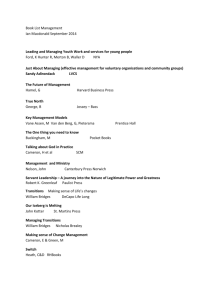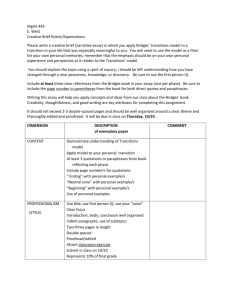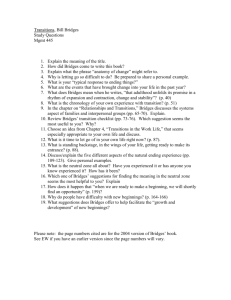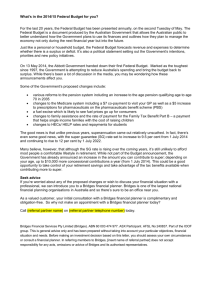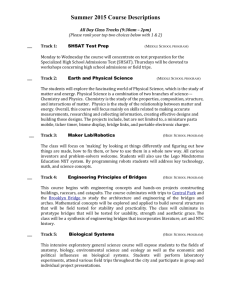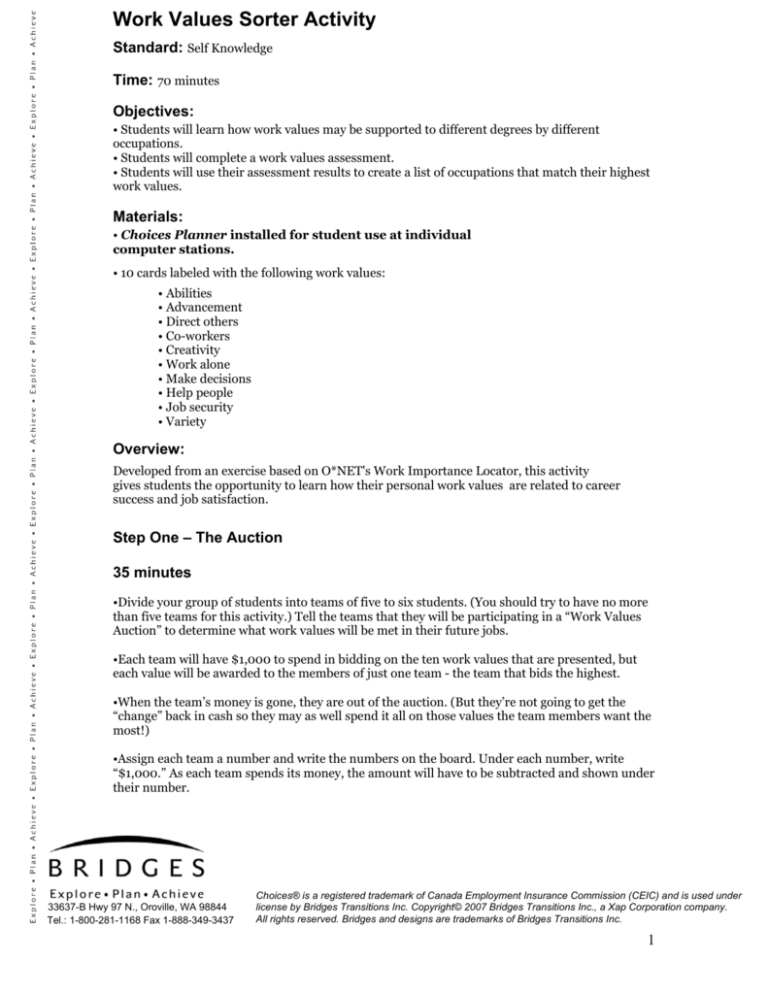
Work Values Sorter Activity
Standard: Self Knowledge
Time: 70 minutes
Objectives:
• Students will learn how work values may be supported to different degrees by different
occupations.
• Students will complete a work values assessment.
• Students will use their assessment results to create a list of occupations that match their highest
work values.
Materials:
• Choices Planner installed for student use at individual
computer stations.
• 10 cards labeled with the following work values:
• Abilities
• Advancement
• Direct others
• Co-workers
• Creativity
• Work alone
• Make decisions
• Help people
• Job security
• Variety
Overview:
Developed from an exercise based on O*NET's Work Importance Locator, this activity
gives students the opportunity to learn how their personal work values are related to career
success and job satisfaction.
Step One – The Auction
35 minutes
•Divide your group of students into teams of five to six students. (You should try to have no more
than five teams for this activity.) Tell the teams that they will be participating in a “Work Values
Auction” to determine what work values will be met in their future jobs.
•Each team will have $1,000 to spend in bidding on the ten work values that are presented, but
each value will be awarded to the members of just one team - the team that bids the highest.
•When the team’s money is gone, they are out of the auction. (But they’re not going to get the
“change” back in cash so they may as well spend it all on those values the team members want the
most!)
•Assign each team a number and write the numbers on the board. Under each number, write
“$1,000.” As each team spends its money, the amount will have to be subtracted and shown under
their number.
33637-B Hwy 97 N., Oroville, WA 98844
Tel.: 1-800-281-1168 Fax 1-888-349-3437
Choices® is a registered trademark of Canada Employment Insurance Commission (CEIC) and is used under
license by Bridges Transitions Inc. Copyright© 2007 Bridges Transitions Inc., a Xap Corporation company.
All rights reserved. Bridges and designs are trademarks of Bridges Transitions Inc.
1
Work Values Sorter Activity
•Give the teams about 2 minutes to designate their spokesperson, noting that the
spokesperson is the only one who can make a bid on behalf of their team.
•Ask each spokesperson to assist in putting the card(s) on the board as you ask students to help
define each term briefly. Assure that the following concepts are a part of their definitions:
•Abilities - you have the opportunity to use your talents and abilities in your work.
•Advancement - you get raises and promotions.
•Direct others - you are in a position of authority and will tell other workers what to do.
•Co-workers - the people that you work with are pleasant and easy to get along with.
•Creativity - you get the chance to try out your own ideas.
•Work alone - you won’t be interrupted by others as you complete your tasks.
•Make decisions - you are responsible for identifying solutions and making the choices.
•Help people - your work involves giving direction and instruction to others.
•Job security - you are assured that your job will be there as long as you want it.
•Variety - you do many different kinds of tasks.
•Tell the teams that they have five minutes to discuss which of the work values are the most
important to them so they can prioritize a team list, and be ready to make the highest bid for the
ones the team really wants. Minimum bid for any one value is $100, and the bids must increase by
at least $50.
•Start the bidding! Remind students that only the spokesperson will be recognized by the
auctioneer. Assure that each time a team “wins” one of the values, the cost is deducted from their
total.
•At the end of the auction, take five minutes to discuss how successful the teams feel in obtaining
the values they most wanted. Which team has the best combination of work values? Why? Help
students understand that what one person considers the “best” value may not be important to
someone else. Thus, trying to identify a team’s priority list may have been challenging.
Step Two – The Work Values Sorter Assessment
20 minutes
•Introduce the Work Values Sorter in Choices Planner. Tell students that they are
going to have the opportunity to think about characteristics of their ideal jobs in order to develop
a personal list of work values. Even though there are twenty statements to work with, they won’t
have to convince anyone else that their priorities are the “best” ones, and their results will be
expressed in terms of just six broad work values. There are no right or wrong answers, just their
own personal reactions to what they see as important in their ideal work situations.
•Let students know that this assessment should expand their career options by helping them learn
about occupations they may otherwise not have considered. Tell students that you will be helping
them understand their results.
•Allow students ample time to complete the Work Values Sorter. Encourage those that
are finished early to review their results and consider sharing why they believe their top two
values came up for them.
Step Three – Checking for Understanding
What will the student learn as a result of participation in this activity?
33637-B Hwy 97 N., Oroville, WA 98844
Tel.: 1-800-281-1168 Fax 1-888-349-3437
Choices® is a registered trademark of Canada Employment Insurance Commission (CEIC) and is used under
license by Bridges Transitions Inc. Copyright© 2007 Bridges Transitions Inc., a Xap Corporation company.
All rights reserved. Bridges and designs are trademarks of Bridges Transitions Inc.
2
Work Values Sorter Activity
10 minutes
•Tell students that the results of the Work Values Sorter are expressed in terms of six
broad work values. Ask students to look at their results and note their two top values. Tell
students that all of the occupations in Choices Planner have been rated to reflect the degree to which
each of the work values is generally supported. By discovering their own highest work values, they
can be matched to the occupations that are similarly rated.
•Ask for volunteers to reveal one of their highest values and share the definition as written in
Choices Planner. Continue to call on volunteers until each of the six values, as defined below, have been
described and discussed.
Achievement - explore occupations that use your abilities and give you a sense of
accomplishment.
Independence - explore occupations that will allow you to work on your own and make
your own decisions.
Recognition - explore occupations that offer prestige or the potential for leadership and
career advancement.
Relationships - explore occupations that allow you to help others and to work with
people who are caring and friendly.
Support - explore occupations where you will have the support of managers and a
company that stands behind its workers.
Working Conditions - explore occupations that offer good pay, job security and other
positive working conditions.
Step Three – Wrap-up (Now what?)
What can the student do with this new information in regard to career development?
5 minutes
•Tell students that occupations that are consistent with their work values are likely to be more
satisfying, but they should remember that there are other aspects of work to consider.
•Have students name some of the other things they will want to know about occupations to help
make their decisions (earnings, skill requirements, education, etc.) Choices Planner can help them learn
much more about the occupations that will best match their values, interests and other
requirements. Encourage students to use Choices Planner frequently as they continue to explore the
world of work.
33637-B Hwy 97 N., Oroville, WA 98844
Tel.: 1-800-281-1168 Fax 1-888-349-3437
Choices® is a registered trademark of Canada Employment Insurance Commission (CEIC) and is used under
license by Bridges Transitions Inc. Copyright© 2007 Bridges Transitions Inc., a Xap Corporation company.
All rights reserved. Bridges and designs are trademarks of Bridges Transitions Inc.
3

